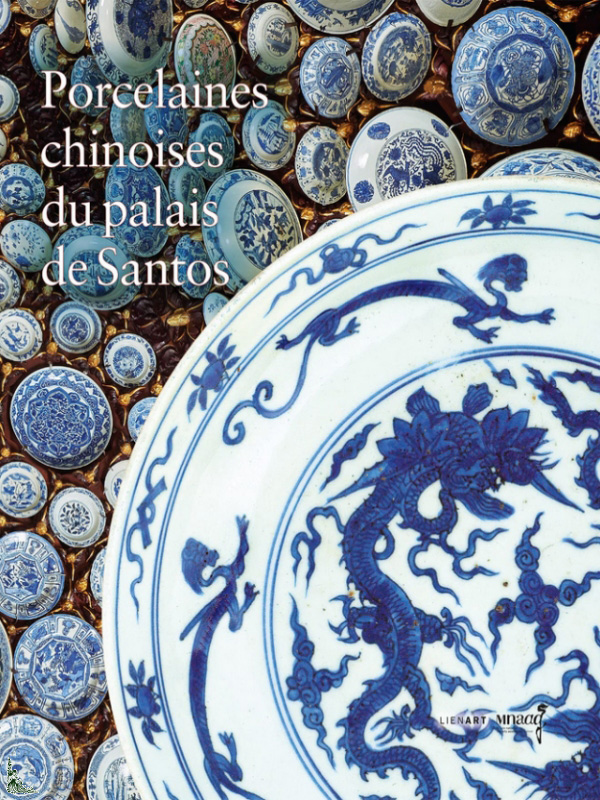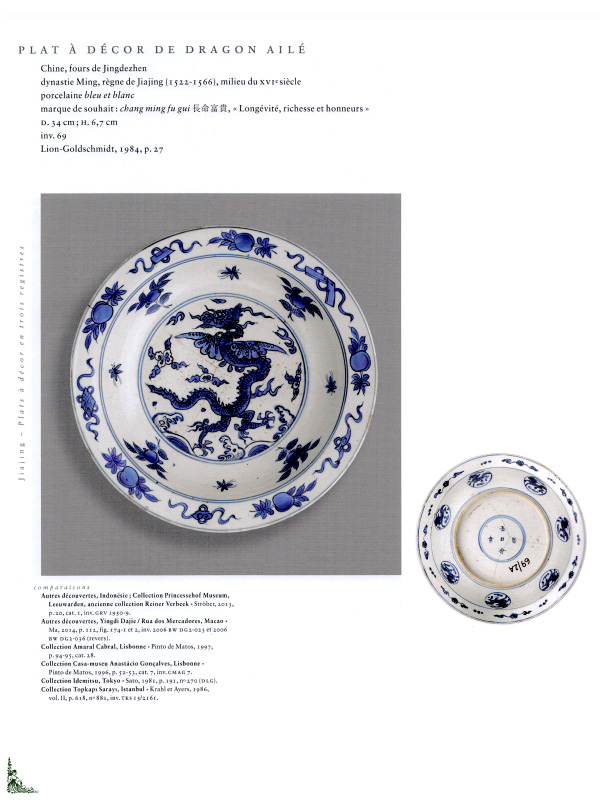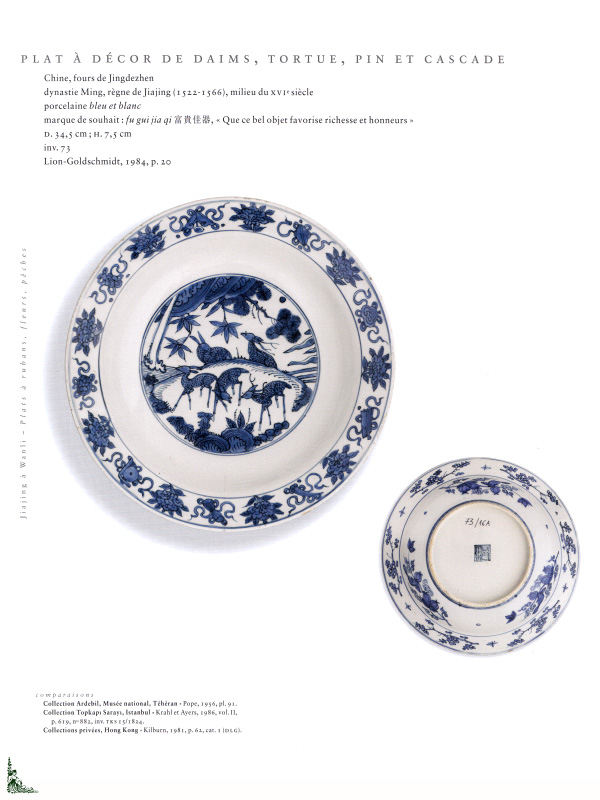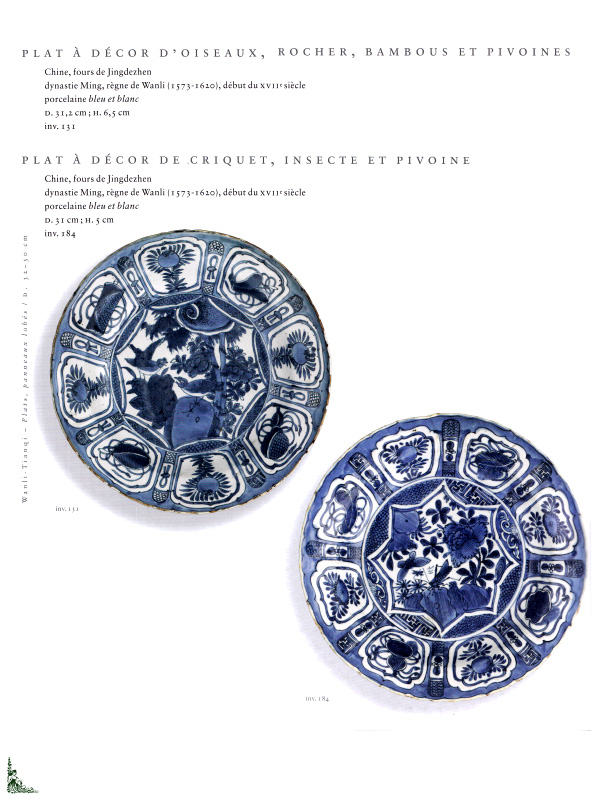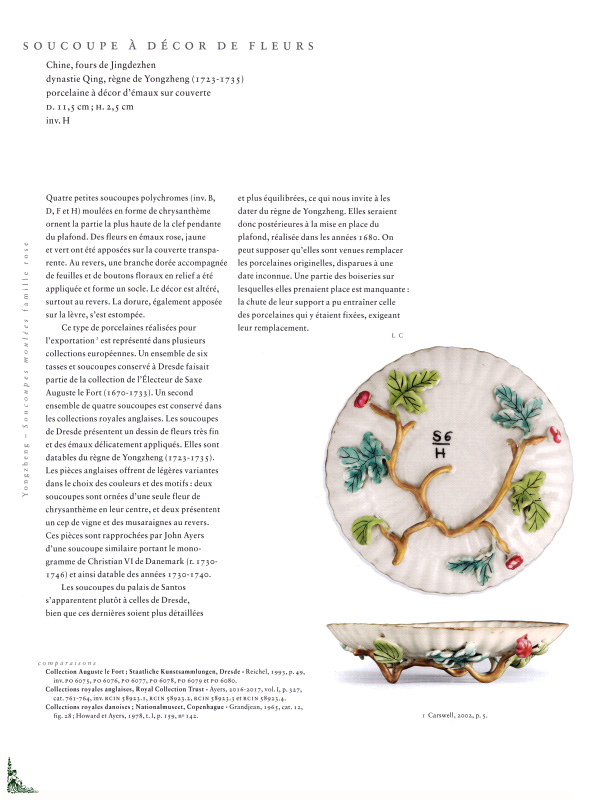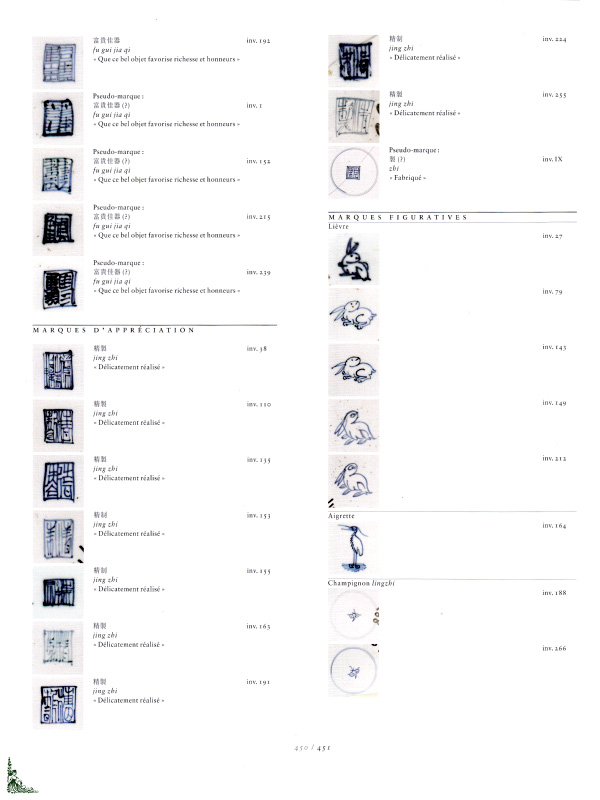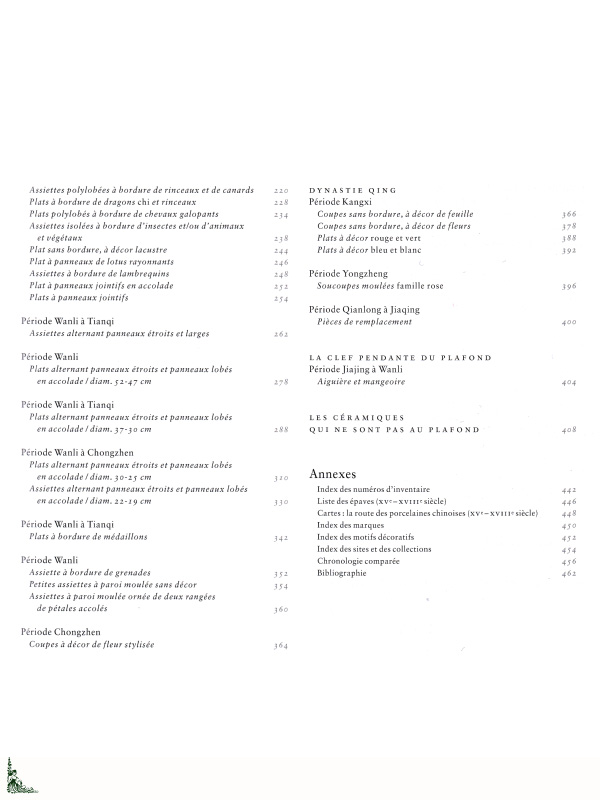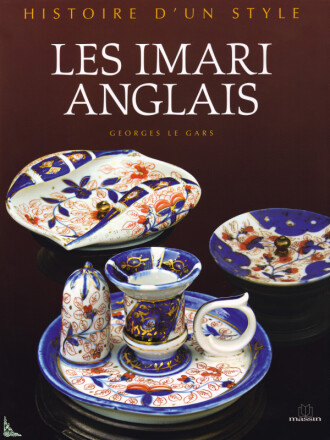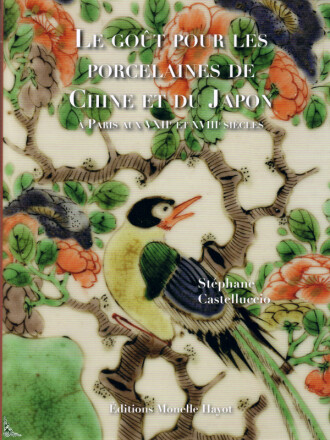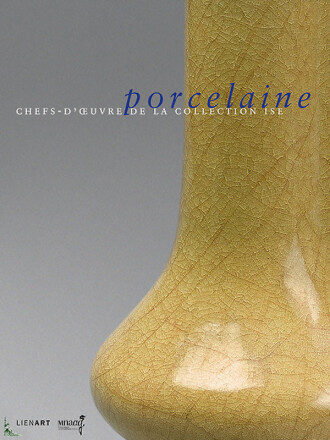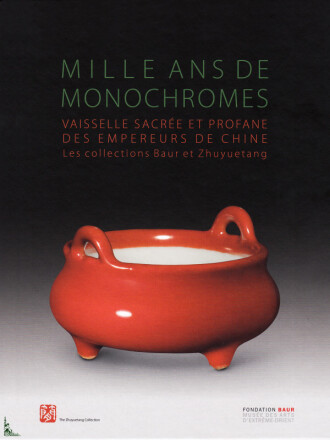Chinese porcelain from Santos palace
Buchinformationen
| Autor : | |
| Herausgeber : | Lienart/Mnaag (2021) |
| Bindung : | Hardcover (478 color pages) 10 inches x 11 inches |
| Sprache : | French |
| ISBN : | 978-2-35906-321-9 |
| EAN : | 9782359063219 |
Beschreibung
Chinese porcelain from Santos palace, Ed. Lienart/Mnaag, 10 inches x 11 inches ( 25 cm x 28.5 cm ), hardcover book with 478 full color pages
This large book of 478 full color pages constitutes the catalog raisonné of the world unique collection of Chinese porcelain.
The Palace of Santos in Lisbon, today the seat of the French Embassy in Portugal, conceals a treasure: a small square living room, topped with a pyramidal roof in gilded wood, on which are hung nearly three hundred dishes and plates Chinese porcelain with predominantly white and blue decor.
Unique in the world, this collection of Chinese porcelain, forming the incomparable and sumptuous decor of the "Porcelain Room" of the Santos Palace, illustrates the history of ceramic production in China, between the beginning of the 16th century and the end of of the 18th century, and its trade with Europe.
The importation by boat of cargoes of Chinese ceramics as well as many other productions from the 16th century had a considerable economic impact, but above all opened a window on two worlds. Europe then discovered China, and China Europe, via return shipments. These exchanges have also given rise to technological transfers and astonishing artistic creations on European soil. Although this collection constitutes the largest collection of Chinese porcelain that arrived so early in Europe, it is virtually unknown to Chinese specialists and a fortiori to the general public, both Chinese and European.
Contents:
- Santos Palace
- The Chinese porcelain route
- Technical transfers, imitations and influences
- MING DYNASTY
- Hongzhi period to Zhengde period
- Zhengde period to Jiajing period
- Jiajing period
- Jiajing period to Wanli period
- Wanli period
- Wanli period to Tianqi period
- Wanli period to Chongzhen period
- Chongzhen period
- QING DYNASTY
- Kangxi period
- Youngzheng period
- Qianlong period to Jiaqing period
- Index of inventory numbers
- List of shipwrecks (15th - 18th centuries)
- Maps: The Chinese Porcelain Route (15th - 18th centuries)
- Index of marks
- Index of decorative motifs
- Index of sites and collections
- Bibliography
The French texts are written under the direction of Claire Déléry.
 Description française
Description française
Porcelaines chinoises du palais de Santos
Détails du livre
| Auteur : | |
| Éditeur : | Lienart/Mnaag (2021) |
| Reliure : | Relié (478 pages couleurs) 25 cm x 28.5 cm ( 10 inches x 11 inches ) |
| Langue(s) : | Français |
| ISBN : | 978-2-35906-321-9 |
| EAN : | 9782359063219 |
Description
Porcelaines chinoises du palais de Santos, Ed. Lienart/Mnaag, 25 cm x 28.5 cm, relié avec 478 pages couleurs
Ce grand livre de 478 pages constitue le catalogue raisonné de la collection unique au monde de porcelaines chinoises.
Le palais de Santos à Lisbonne, aujourd'hui siège de l'ambassade de France au Portugal, recèle un trésor : un petit salon carré, coiffé d'un toit pyramidal en bois doré, sur lequel sont accrochés près de trois cents plats et assiettes de porcelaine chinoise au décor majoritairement blanc et bleu.
Unique au monde, cette collection de porcelaines chinoises, constituant l'incomparable et somptueux décor de la « salle des Porcelaines » du palais de Santos, illustre l'histoire de la production de céramiques en Chine, entre les débuts du XVIe siècle et la fin du XVIIIe siècle, et son commerce avec l'Europe.
L'importation par bateau de cargaisons de céramiques chinoises ainsi que de nombreuses autres productions à partir du XVIe siècle a eu un impact économique considérable, mais a surtout ouvert une fenêtre sur deux mondes. L'Europe découvre alors la Chine, et la Chine l'Europe, via les cargaisons de retours. Ces échanges ont également donné lieu à des transferts technologiques et à d'étonnantes créations artistiques sur le sol européen. Si cette collection constitue le plus grand ensemble de porcelaines chinoises arrivées de façon si précoce en Europe, elle est quasiment inconnue des spécialistes chinois et a fortiori du grand public, aussi bien chinois qu'européen.
Principaux chapitres de l'ouvrage :
- Le palais de Santos
- La route des porcelaines chinoises
- Transferts techniques, imitations et influences
- DYNASTIE MING
- Période Hongzhi à Zhengde
- Période Zhengde à Jiajing
- Période Jiajing
- Période Jiajing à Wanli
- Période Wanli
- Période Wanli à Tianqi
- Période Wanli à Chongzhen
- Période Chongzhen
- DYNASTIE QING
- Période Kangxi
- Période Youngzheng
- Période Qianlong à Jiaqing
- Index des numéros d'inventaire
- Liste des épaves (XVe - XVIIIe siècles)
- Cartes: La route des porcelaines chinoises (XVe - XVIIIe siècles)
- Index des marques
- Index des motifs décoratifs
- Index des sites et des collections
- Bibliographie
Les textes en Français sont écrits sous la direction de Claire Déléry.


